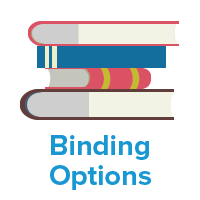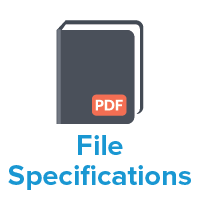When it comes to book design, the edges of a book’s pages can transform a standard volume into a work of art. From sprayed edges to gilded edges, these treatments add aesthetic appeal and personality. In this post, we’ll explore the differences between sprayed edges, graphical sprayed edges, gilded edges, and full bleed, diving into their unique characteristics, processes, and effects.
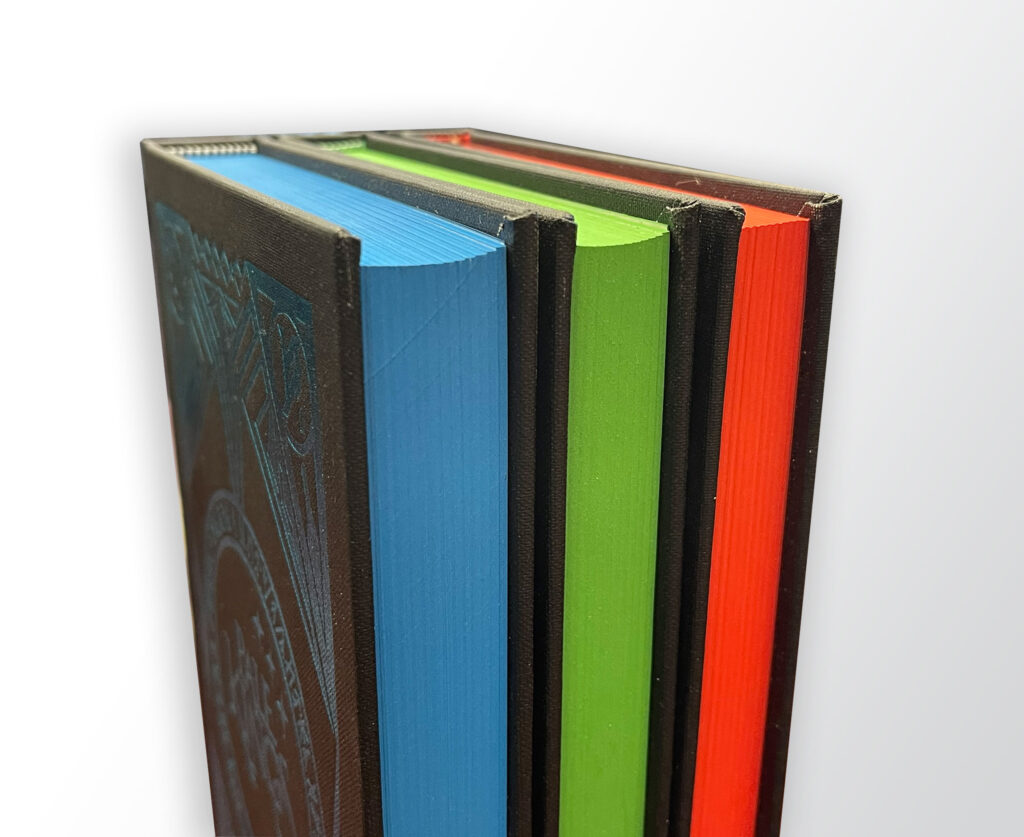
Sprayed Edges
Sprayed edges, also known as colored edges, involve applying one solid color to the edges of a book’s pages. This technique is typically done by spraying paint or ink onto the fore-edge, top, or bottom of the book block after it’s bound but before the cover is attached.
- Appearance: Uniform color (e.g., red, black, or blue) across the page edges, giving a sleek, modern look. The color is visible when the book is closed and can complement the cover design or theme.
- Process: The book block is clamped tightly, and ink or paint is sprayed using an airbrush or similar tool. The result is a smooth, even coating, though slight variations may occur for a handcrafted feel.
- Purpose: Adds a pop of color, enhances visual appeal, and can reflect the book’s genre or mood (e.g., dark sprayed edges for a thriller).
- Example Use: Common in special editions of contemporary novels or collector’s editions, like black sprayed edges on a fantasy novel to evoke mystery.
We offer sprayed edges for both hardcover and softcover books, with no minimum order quantity.
Graphical Sprayed Edges
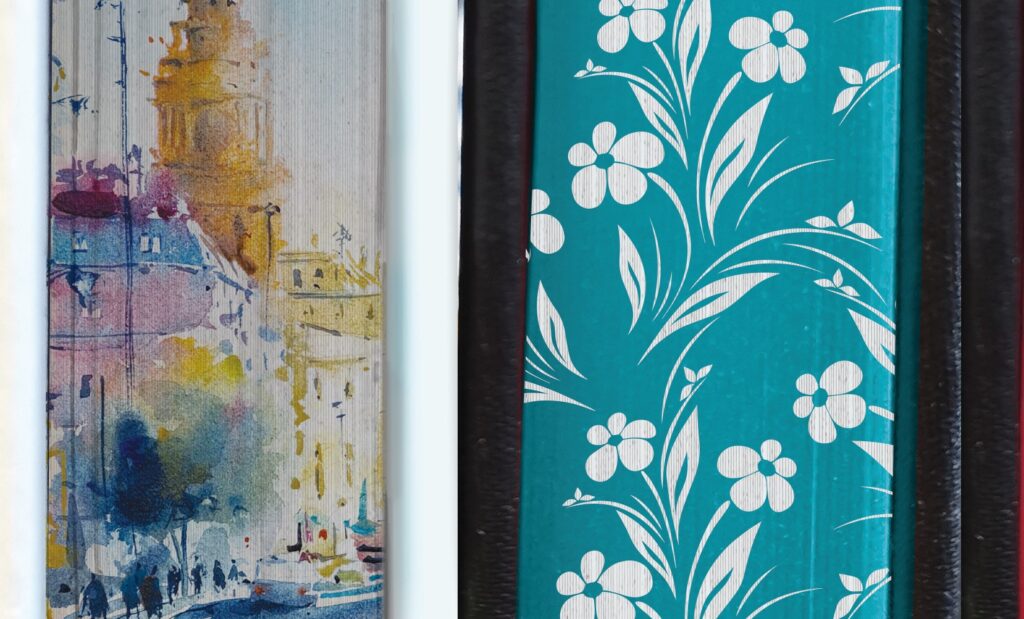
Graphical sprayed edges take the concept of sprayed edges a step further by incorporating patterns, images, or designs onto the page edges. Instead of a single color, these edges feature detailed artwork, such as florals, landscapes, or thematic motifs.
- Appearance: Intricate designs or illustrations that align with the book’s content or aesthetic. For example, a fantasy novel might have edges with a dragon or map design.
- Process: This requires advanced techniques, such as stenciling or digital printing, to apply detailed graphics. The book block is clamped, and the design is carefully sprayed or printed onto the edges, often requiring multiple layers or colors.
- Purpose: Elevates the book’s collectible value and creates a unique, immersive experience. The designs can hint at the story or make the book a display-worthy piece.
- Example Use: Popular in special editions of fantasy or sci-fi series.
Gilded Edges
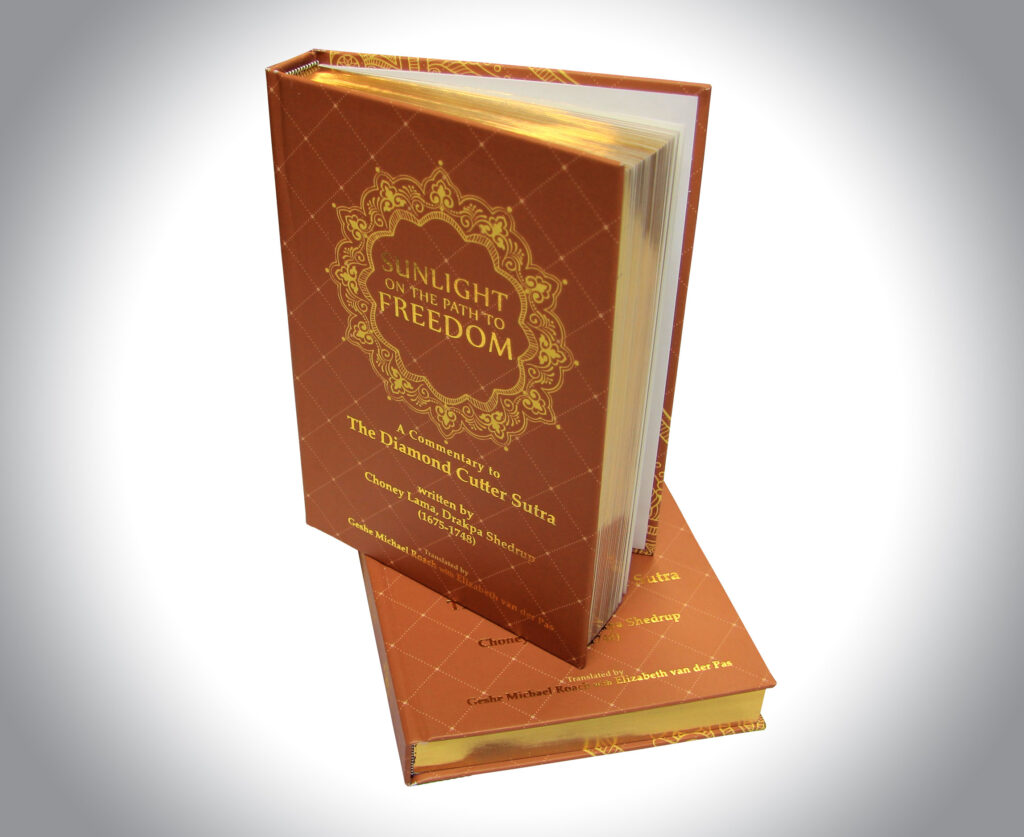
Gilded edges are a luxurious treatment where the page edges are coated with a metallic finish, typically gold or silver, giving the book a shimmering, elegant look. Historically associated with high-end or religious texts, gilding is a hallmark of craftsmanship.
- Appearance: Shiny, reflective edges that catch the light, creating a premium, timeless aesthetic. Gold is the most common, but silver, bronze, or even colored foils can be used.
- Process: The book block is clamped, and a thin layer of metallic foil or leaf (often gold or aluminum-based) is applied using adhesive and pressure. The edges are polished for a smooth, mirror-like finish.
- Purpose: Signals prestige and durability, as gilding can protect page edges from dust and wear. It’s often used to make a book feel like a keepsake.
- Example Use: Classic literature, leather-bound editions, or religious texts like Bibles often feature gilded edges.
Gilded edges are only available for offset printed jobs.
Full Bleed
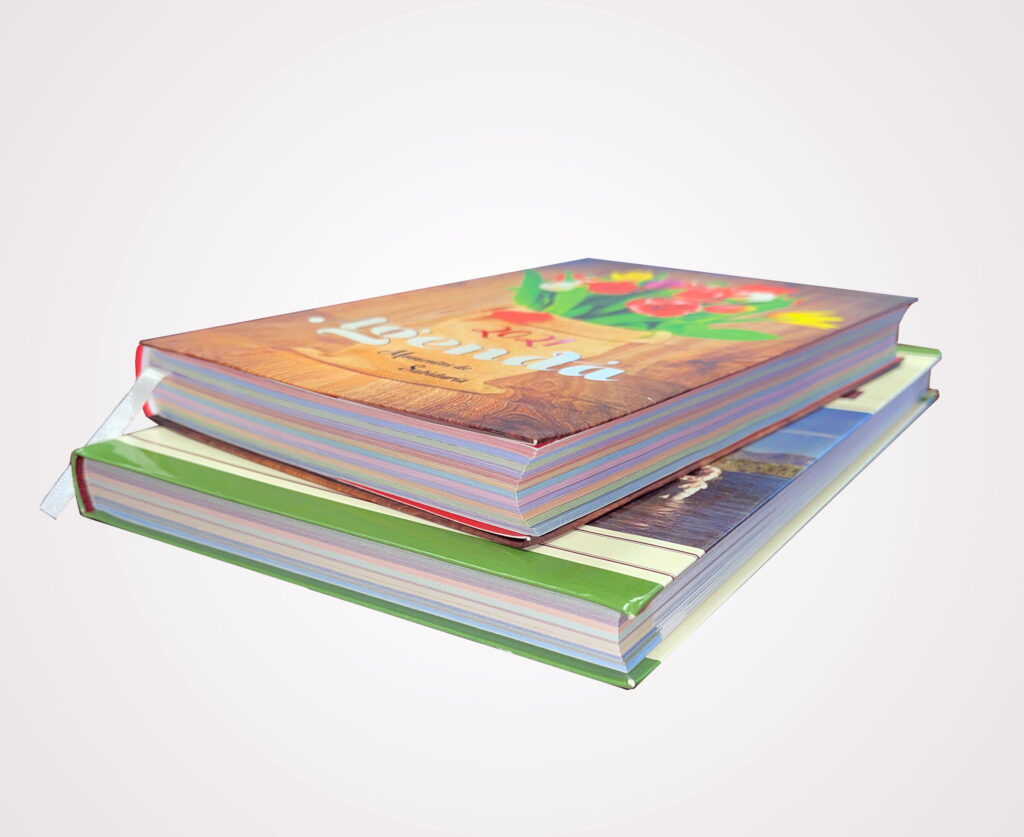
Full bleed refers to a printing technique where the content (images, colors, or designs) extends all the way to the edge of the page, leaving no white margin. While not strictly an edge treatment like the others, it affects the appearance of a book’s edges when viewed from the side.
- Appearance: When the book is closed, the edges may show a mix of colors or images from the printed pages, creating a varied, rainbow-like visual effect.
- Process: During printing, the design is extended beyond the page’s trim size, and the excess is cut off after printing to ensure no borders remain.
- Purpose: Enhances the immersive quality of the book’s content, especially for visually driven works. The edges may indirectly reflect the book’s interior art or color scheme.
- Example Use: Common in coffee table books, graphic novels, or children’s picture books where illustrations span the entire page.
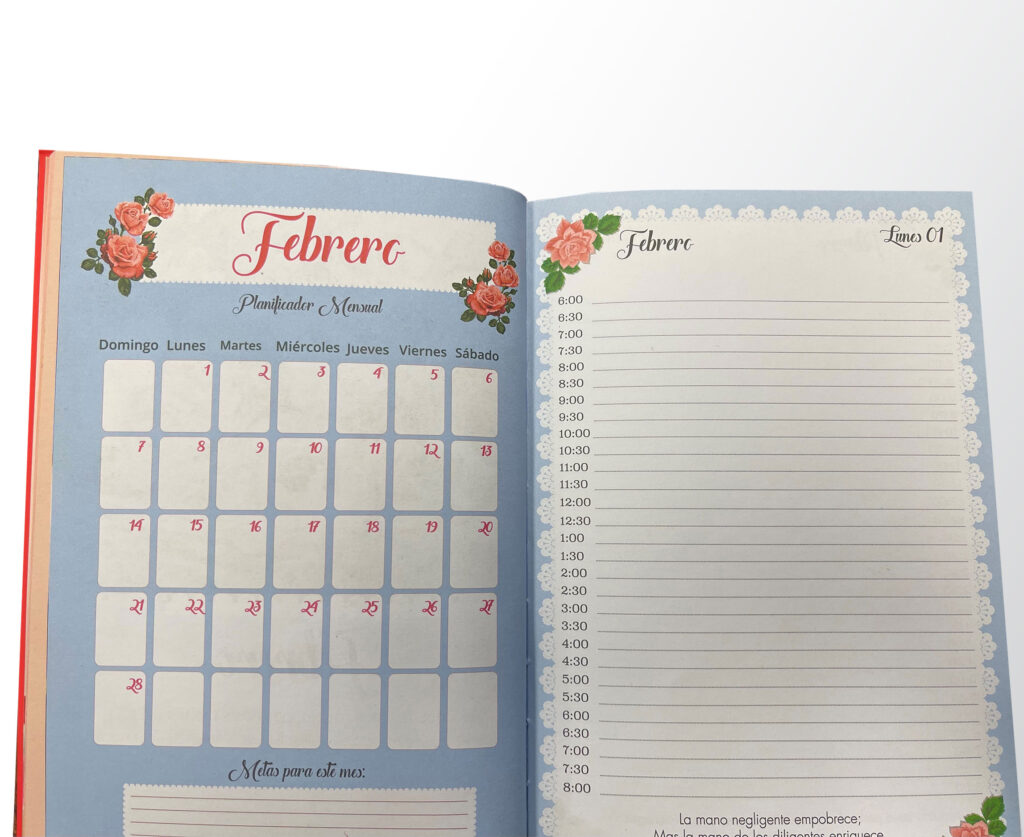
Key Differences at a Glance
| Feature | Sprayed Edges | Graphical Sprayed Edges | Gilded Edges | Full Bleed |
|---|---|---|---|---|
| Appearance | Solid color | Detailed patterns/images | Metallic shine | Mixed colors/images |
| Process | Spray paint/ink | Stenciling/printing | Metallic foil | Edge-to-edge printing |
| Purpose | Aesthetic, thematic | Collectible, artistic | Luxurious, durable | Immersive visuals |
| Common Use | Special editions | Collector’s editions | Classic/religious | Art books, graphic novels |
Which One Should You Choose?
- For Collectors: Graphical sprayed edges or gilded edges are ideal for limited editions or display-worthy books, as they add significant visual and collectible value.
- For Budget-Friendly Appeal: Sprayed edges offer a striking yet affordable way to enhance a book’s look.
- For Visual Storytelling: Full bleed is perfect for books where the interior art or design is the star, like graphic novels or photography books.
- For Timeless Elegance: Gilded edges are the go-to for classic or high-end editions that aim to feel like heirlooms.
Conclusion
Whether you’re a reader, collector, or publisher, understanding the differences between sprayed edges, graphical sprayed edges, gilded edges, and full bleed can help you appreciate the artistry behind a book’s design. Each technique offers a unique way to elevate a book’s aesthetic, making it more than just a story—it’s a piece of art.
Sprayed and gilded edges are one of our many custom options. If you are interested in printing a book with specialty edges, submit a quote request using on online form. We can’t wait to work with you on your custom printing job!
